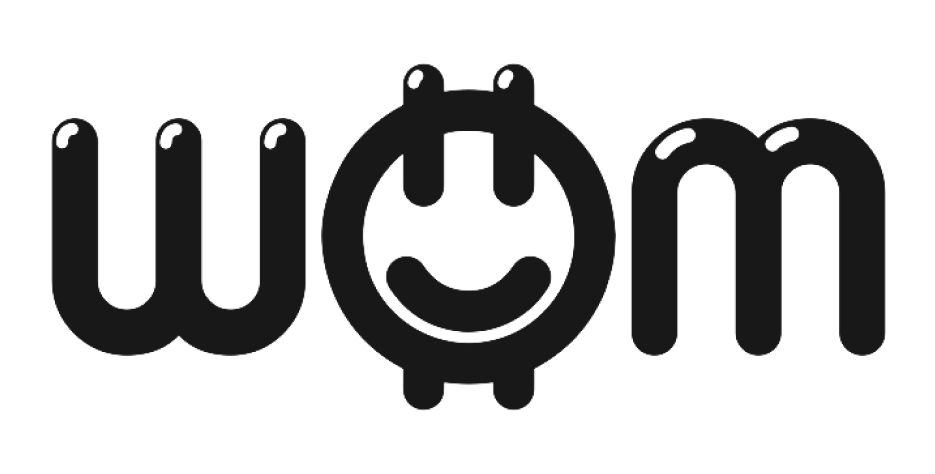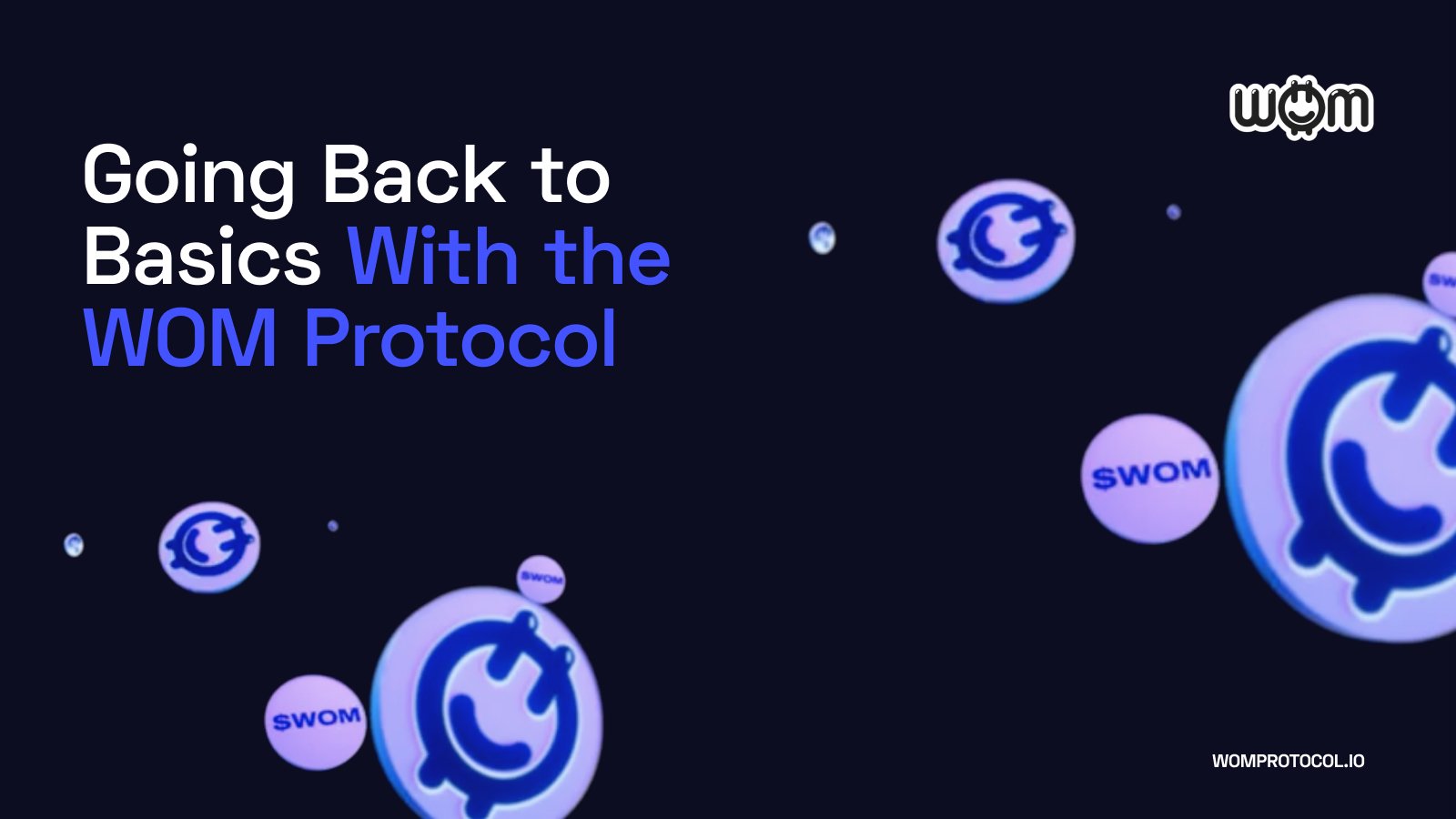Going Back to Basics With the WOM Protocol
When you are on the inside of a project it is easy to get caught up in the details. That’s why interviews with smart industry thinkers such as this recent one with Coinsider are so valuable because they help the team zoom out and see WOM from the outside, and essentially surface the most pertinent questions and considerations about our project that people are curious to ask.
With that in mind, we’ve broken down the basics of the WOM Protocol to provide our longest-standing community members with a consolidated recap, and our newest arrivals with a simple overview.
What’s the story behind WOM?
Put simply, the advertising industry is broken. This was true in 2018 when the concept behind WOM was developed, and it’s even more relevant now as ad spending across major tech platforms declines (Modern Retail), creative talents walk away from the industry (AdWeek), and the advertising jobs market stands on increasingly shakier ground (Insider Intelligence).
In response to this, a recent CreatorIQ report revealed that 67% of brands had increased their influencer marketing spend between 2022-2023 and that 76% of brands did so by diverting budgets away from digital advertising (“Can Creator-Led Marketing Really Drive ROI?” CreatorIQ).
People do not trust, nor do they want to watch adverts. Especially not adverts that interrupt their browsing and stall their scrolling. At the same time, platforms need people, and without their valuable content, conversations, and contributions there would be no point for the platforms to even exist. Therein lies the problem: how can platforms continue attracting users and providing a good experience, but still find a sustainable way to monetize without driving users away?
In the beginning and to this day we have always asked ourselves:
What would a better platform monetization model look like?
How could creators get more fairly rewarded for their contribution?
What could a better value exchange between creators and platforms look like?
How can marketing regain trust?
This is what led us to build a protocol layer around word-of-mouth marketing. When people recommend products to one another, this kind of content is more interesting because the creators are a more relatable proxy for the content consumers.
You can see this with the rise of influencer marketing over the past decade. First bigger celebrity influencers started monetizing their endorsements and now everyone can monetize their personal marketing power, you see this with the growth of UGC creators.
This is the gradual evolution of the marketing industry away from adverts to a place where everyone can share recommendations and get rewarded for it. If we can find a way to qualify and scale these trusted recommendations then these can be used as an alternative monetization model to replace advertising. This is what the WOM Protocol has built.
Where Is WOM out in the wild?
The WOM Protocol has been tested in diverse apps. WOM’s flagship app, BULLZ, which launched in 2021, has close to 130,000 users. Here creators make videos recommending Web3 projects they like and earn tokens based on the content’s engagement. Web3 projects can also search for recommendations about their own projects to pay for in order to repurpose.
The WOM Protocol was also integrated into the Web2 lifestyle app, YEAY, where users earned tokens for their word-of-mouth product recommendations. In the lifestyle sector, we saw that things are moving more slowly. Most consumers are still unsure about earning crypto, they aren’t clear what to do with tokens in a wallet, or how to exchange crypto to fiat, and there are a lot of processes that still need to be learned. It is easier to find adoption among people who already have an interest in Web3. This is why WOM decided to end the integration with YEAY until crypto adoption is more widely spread, and instead focus on BULLZ as well as similar platforms with more Web3-savvy communities. BULLZ, meanwhile, is continuing to grow, seeing more than 50,000 transactions in the system a day. As a result, WOM has a proof of concept and real user adoption.
How does WOM’s marketing channel work?
Authentic Word of Mouth
In order for creators to make video-based project recommendations, they must first stake tokens to put skin in the game. The content then goes through authentication by community members who act like nodes to evaluate whether a piece of content is authentic and are rewarded for doing so (authenticator payments are explained in greater detail here).
Authenticators assess content based on whether it is trustworthy, is of a certain quality, and is actually a positive endorsement of the project. WOM has an eight-hour consensus mechanism, and after this, a piece of content is validated and eligible to earn based on the authentication and the content’s subsequent engagement.
Throughout this whole process there are three participants who are eligible to earn:
The creator who makes the recommendation;
The authenticator who validates the recommendation;
The platform that delivers the interface.
This is where an advertiser, which might be an exchange, a metaverse, a game, or a DeFi project, can enter WOM’s content archive via the WOM Campaign Manager, which contains close to 200,000 videos, to search to see whether creators have recommended a project, and can then pay to use this word-of-mouth content for marketing.
Creator UGC
We also enable smaller projects who might not have any marketing support, to reach out to BULLZ creators and make a request for UGC video recommendations using the BULLZ Campaign Manager – which creators can then choose to accept and participate if they feel the project is a good fit. This is more akin to influencer and creator marketing.
How do creators add content to the WOM system?
Creators can create and upload content on the BULLZ platform, and from here they can directly publish the content onto Twitter, TikTok, YouTube, Instagram, and Twitch - with plans to extend this to further platforms in the future. The content does not only live on the BULLZ platform but rather it can be distributed everywhere. Creators can share the video content on Telegram and Discord, which are very important messaging and community channels in the Web3 space, and these links feature video previews for maximum engagement.
Do creators get paid based on content views or brand requirements?
Authentic Word of Mouth
For authentic word-of-mouth recommendations initiated by a creator, the creator earns tokens based on the rating by the authenticators, and based on the content engagement. If a brand uses content outside of the BULLZ network, for example, in their wider marketing campaigns, then it is very likely that the creator will get more views and engagement and subsequently earn more tokens.
Creator UGC
If a creator produces content based on a content request from a project, then this works in a similar way to influencer marketing where a brand says, “I need 5x videos, and I am willing to pay x for a video, and x for a share on TikTok, or YouTube, or Twitter”. In this case, a creator is paid once they have uploaded the content and once they have shared it and provided a link. There is a level of uncertainty in the creator space around payment – payment isn’t always guaranteed, but in this case, the payment is held in escrow, so the creator knows that providing they complete the task and follow the guidelines, they will immediately be paid once the content is uploaded, or shared. This process is automated.
How much would someone get paid from the WOM Protocol for putting out a decent TikTok and getting, for example, 10,000 views?
WOM payments are released every 24 hrs and because of this, the amount someone earns is ultimately dependent on more than purely the rating or engagement of their content. Factors such as the number of overall pieces of content uploaded that day, and how these were spread across networks, will all affect the amount someone will earn in a given day.
There are creators who have made $100-$500 worth of tokens per month, and on top of this have generated brand deals through the platform. WOM currently provides creators with an opportunity to diversify platforms and income streams rather than outright replace them, and because it is a platform that pays everyone, this provides a chance for content creators who are just getting started.
BULLZ currently has a 60k+ creator base, and this is growing, and not everyone here is an influencer. Even the big Web2 platforms, such as TikTok are starting to pay creators, and creators are making a nice amount of money. Now Twitter is testing this out with payments and you can already see that this is what was needed.
It is arguable that Web2 platforms would not have reacted to this need if there was no competition coming from the Web3 space and the mindset here of valuing creators in a new way. These bigger platforms are now sensing the pressure to change.
Every social platform was built through the creativity of its contributors, and without good content, no one would dedicate time or attention to a platform. As WOM continues its mission it is positive to see that creator and platform value exchanges are taking a positive step forward.

